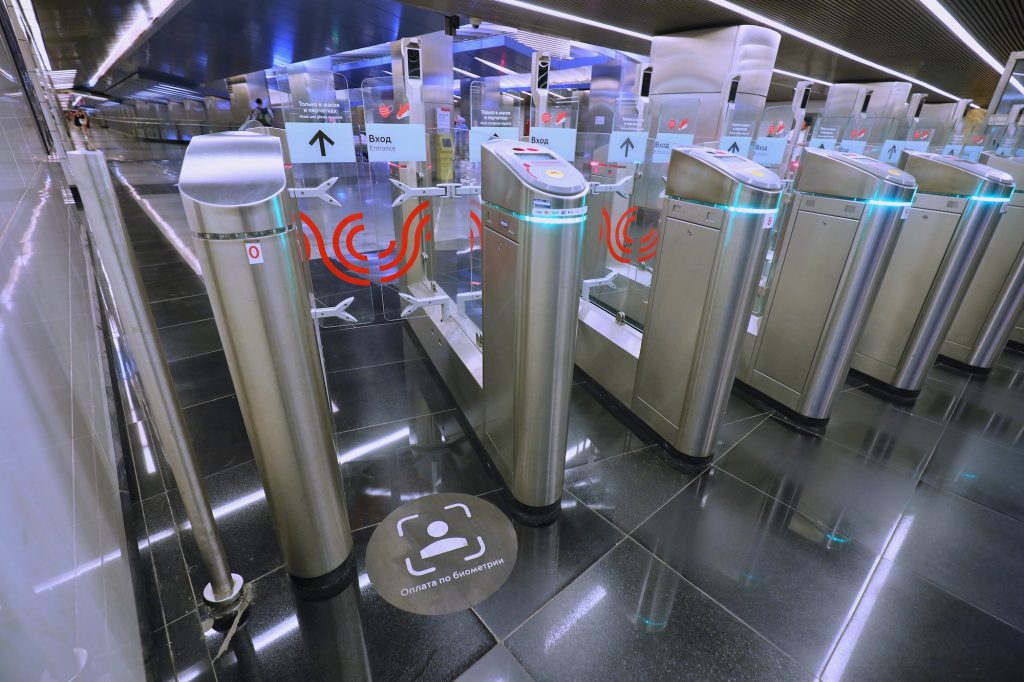Social media has had more than a decade to prove that your face is someone else’s fortune, but the Moscow Metro is really hammering the point home. The Russian transportation agency is trialling something called FacePay on its Filevskaya metro line.
FacePay, as the name suggests, is a facial recognition system that lets users pay for things using biometric data — specifically those chiselled (or possibly crafted-from-pudding — hey, people are all different) features you’re carting around all day.
Moscow Metro 2033?
How it works in this particular instance is that eligible users will download the Moscow Metro app, upload a photograph of themselves and then link a bank card. Then, when they hit a metro turnstile, they just stand on the marked spot (as seen in the image above) and the little camera will deduct money from their account and permit them ingress. Easy, right?
But it does rather rely on trusting access to your facial features to an outside entity. There are already questions about who owns your face in an era where biometric information is being gathered and stored. Facial recognition is already in widespread use in China, where it’s currently preventing children from playing more video games than the government there believes is healthy. Korea is conducting public transportation tests when it comes to face-based payment, and Georgia already has the tech in place.
South Africa doesn’t really have this sort of public transportation, so we’re unlikely to see a version of it any time soon. At worst, we’ll see it turn up on the Gautrain, at best it’ll one day be implemented on a (hopefully self-driving) minibus taxi — but by then it’ll be a mature technology and hopefully all the questions around it will have been worked out.
At the moment, it’s not known how long the Moscow Metro will keep facial data after the trial is complete and what sort of security is protecting that data. There’s also no information on whether that data will be shared with police or other law-enforcement agencies. Then there’s the question as to whether users will be permitted to opt out of using facial recognition as a payment method once it becomes more commonplace. It’s entirely possible that facial recognition will be forced on the citizens of a given country, should the technology become widespread enough. Whether it’s worth it is something to consider, before we get to that point.




